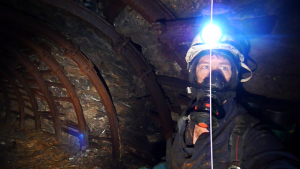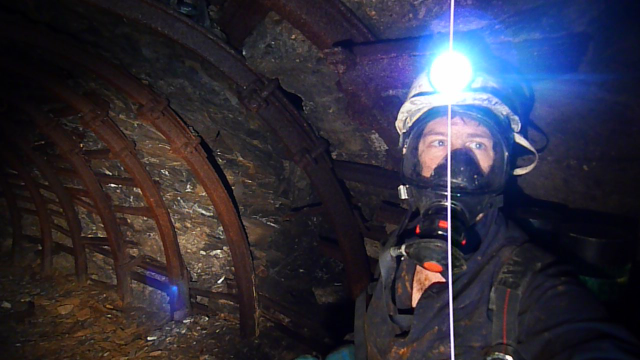“ATEX” is an abbreviation for the ATEX Directive and is short for “Atmospheres Explosibles”. It is a set of European Union regulations that are designed to ensure the safety of products being used in explosive environments. Explosive atmospheres are work areas that contain flammable gases, mists or vapours or by combustible dusts. All it needs is a source of ignition to cause an explosion. via ipu.co.uk
The ATEX Directive

The ATEX Directive 2014/34/EU covers equipment and protective systems intended for use in potentially explosive atmospheres.
The changes are limited to ATEX rated equipment. No changes affect risk assessment requirements.
The Directive defines the essential health and safety requirements and conformity assessment procedures, to be applied before products are placed on the EU market. It is aligned with the New Legislative Framework policy, and it has been applicable from 20 April 2016, replacing the previous Directive 94/9/EC.
A Guidance document on the ATEX Directive transition from 94/9/EC to 2014/34/EU (371 KB) is available, with a list of frequently asked questions and answers.
National authorities are responsible for implementing the Directive in the EU by transposing its provisions into their legislation. These texts have direct effect in the first instance. As a result, EU countries and others who apply the Directive’s requirements are responsible for implementation and enforcement, as well as the management of notified bodies. via ec.europa.eu
The aim of directive 94/9/EC is to allow the free trade of ‘ATEX’ equipment and protective systems within the EU by removing the need for separate testing and documentation for each member state.
The regulations apply to all equipment intended for use in explosive atmospheres, whether electrical or mechanical, including protective systems. There are two categories of equipment ‘I’ for mining and ‘II’ for surface industries. Manufacturers who apply its provisions and affix the CE marking and the Ex marking are able to sell their equipment anywhere within the European union without any further requirements with respect to the risks covered being applied. The directive covers a large range of equipment, potentially including equipment used on fixed offshore platforms, in petrochemical plants, mines, flour mills and other areas where a potentially explosive atmosphere may be present.
In very broad terms, there are three preconditions for the directive to apply: the equipment a) must have its own effective source of ignition; b) be intended for use in a potentially explosive atmosphere (air mixtures); and c) be under normal atmospheric conditions. via wikipedia.org
What is an Explosive Atmosphere?
Explosive atmospheres in the workplace can be caused by flammable gases, mists or vapours or by combustible dusts. Explosions can cause loss of life and serious injuries as well as significant damage.
Background What is an explosive atmosphere? Where can explosive atmospheres be found? Explosive atmospheres in the workplace Equipment and protective systems intended for use in explosive atmospheres Where can I find further information?
Explosive atmospheres can be caused by flammable gases, mists or vapours or by combustible dusts. If there is enough of the substance, mixed with air, then all it needs is a source of ignition to cause an explosion.
Explosions can cause loss of life and serious injuries as well as significant damage. Preventing releases of dangerous substances, which can create explosive atmospheres, and preventing sources of ignition are two widely used ways of reducing the risk. Using the correct equipment can help greatly in this.
The Dangerous Substances and Explosive Atmospheres Regulations 2002 (DSEAR) place duties on employers to eliminate or control the risks from explosive atmospheres in the workplace. A summary of those requirements can be found below.
This website does not deal with intentional explosives such as those used in demolition work or blasting in quarries.
Moe About “What is an explosive atmosphere?”
In DSEAR, an explosive atmosphere is defined as a mixture of dangerous substances with air, under atmospheric conditions, in the form of gases, vapours, mist or dust in which, after ignition has occurred, combustion spreads to the entire unburned mixture.
Atmospheric conditions are commonly referred to as ambient temperatures and pressures. That is to say temperatures of –20°C to 40°C and pressures of 0.8 to 1.1 bar. via hse.gov.uk
What Changes Occurred in the New 2014 ATEX Directive?
The major changes to the ATEX equipment directive which will affect manufacturers placing products on the market:
- There is no change to the Essential Requirements of Health and Safety as defined in Annex II;
- There is also no technical change in the various evaluation procedures.
The terms of Annexes of the Directive, however, are modified; Present EC Type Examination Certificates will change to EU Type Examination Certificates under the new ATEX Directive 2014/34/EU.
What this means:
A new EU-type examination certificate will be issued and will require changing of the manufacturer’s documentation.
What this means: Manufacturers will need to write new instructions and a new Declaration/Attestation of Conformity with reference to Directive 2014/34/EU instead of the reference to ATEX Directive 94/9/EC. via ul.com
Who Do these Regulations Apply to?
The Regulations apply at most workplaces where flammable substances are stored or used, for example, factories where flammable liquids are present or where flammable dusts are produced in the process.
Examples are chemical processing, spraying of paint and varnishes, LPG storage and filling, milk drying, flour production.
What is a flammable substance? Flammable substance includes any substance or preparation, which because of its properties or the way it is used can cause harm to people from fires and explosions.
Examples of flammable substance are: petrol; liquefied petroleum gas (LPG); paints; varnishes; solvents; and dust which when mixed with air could cause an explosive atmosphere, for example, dust from milling and sanding operations. Flammable substances can be found, in varying quantities, in most workplaces. via hsa.ie
Conclusion
With the introduction of the ATEX Directive manufacturers now have an opportunity to introduce more innovative products than was possible under the old Explosive Atmospheres Directive.
The ATEX Directive sets a number of technical and quality objectives that must be complied with to the satisfaction of a notified body, but once these have been met, a manufacturer is entitled to display the distinctive European Mark which is recognized throughout the European Union. via ce-mark.com


